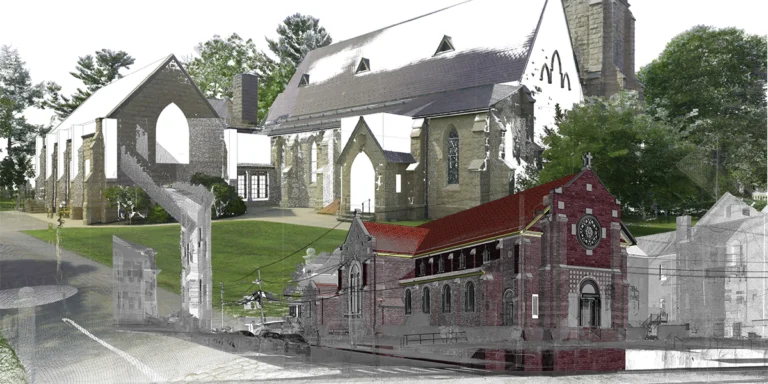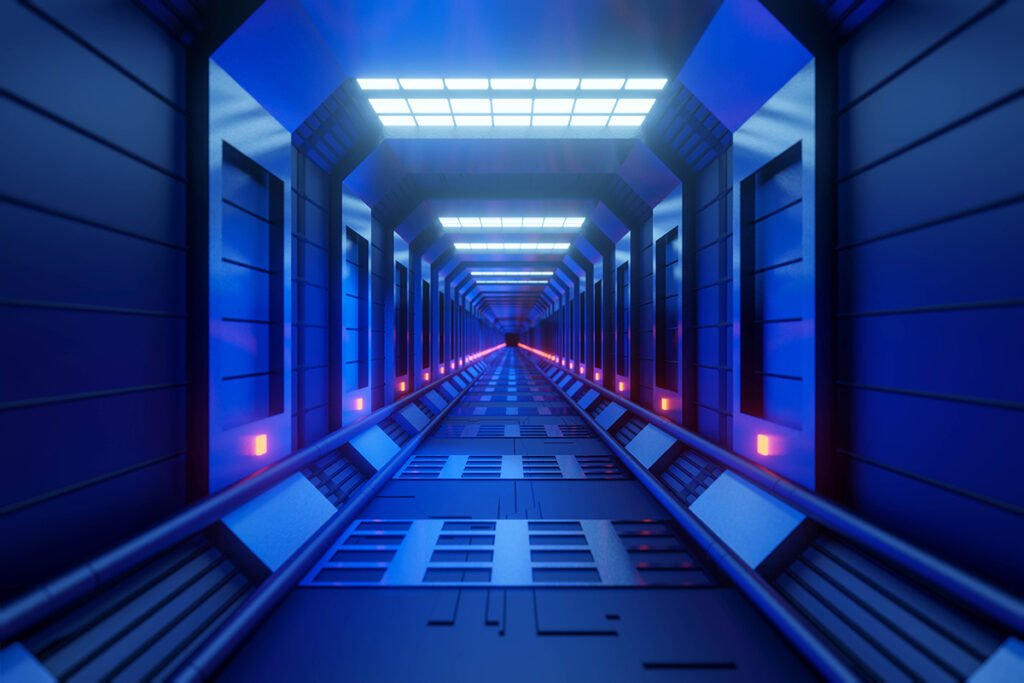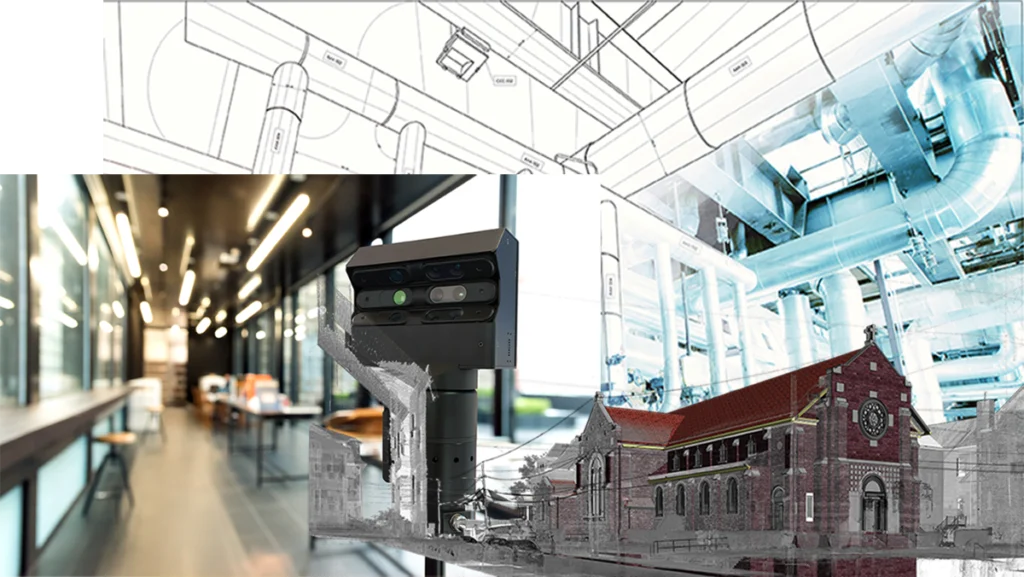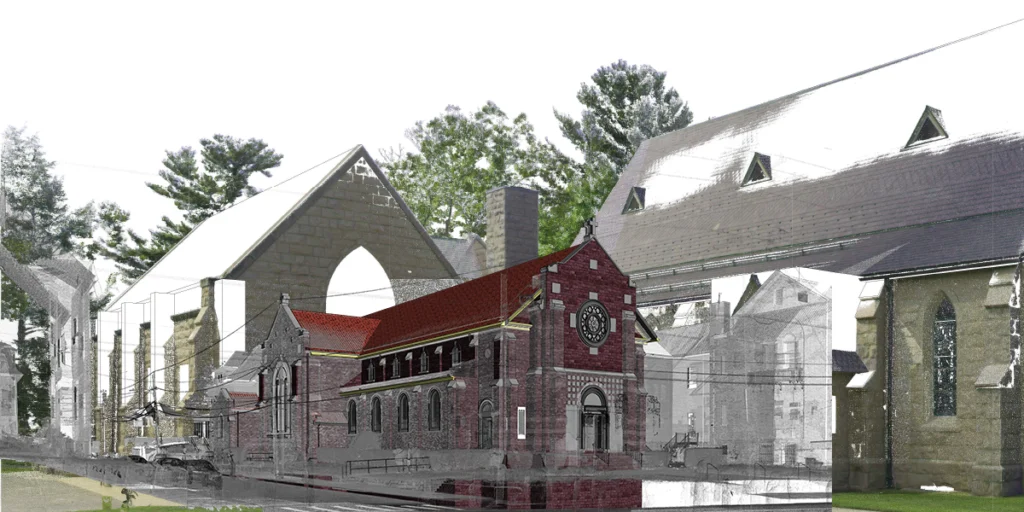Renovation Projects Redefined with Scan to BIM
Published Date
Last Modified

Renovation Projects Redefined with Scan to BIM
Scan to BIM technology transforms renovation and retrofit projects, offering significant benefits to construction industry professionals. By leveraging 3D laser scanning technology and advanced BIM software, Scan-to-BIM modeling provides a highly accurate and detailed digital representation of existing buildings, enabling efficient planning, design, and construction processes.
Recent studies suggest that Scan-to-BIM services are the future of renovation projects, as they offer increased accuracy, efficiency, collaboration, reduced risk, and a high return on investment. With the potential to revolutionize the market, Scan to BIM is quickly becoming an essential tool for architects, engineers, contractors, and owners looking to streamline renovation and retrofit projects.
What is Scan to BIM?
Scan to BIM (Building Information Modeling) uses 3D laser scanning technology to capture accurate as-built data of existing buildings and then convert that data into a digital BIM model.
The process involves using a 3D laser scanner to capture millions of data points representing the geometry and location of all the building elements, including walls, floors, columns, beams, stairs, and other architectural and structural details. The resulting point cloud data is then processed and converted into a BIM model by point cloud modeling services, a digital representation of the physical building that includes information on its dimensions, materials, systems, and other relevant details.
Uses of Point Cloud Modeling for Renovation
Point cloud modeling by point cloud to BIM services is a powerful tool that enables accurate as-built documentation, clash detection and avoidance, precise measurements, historic preservation, and sustainability.
With the ability to create detailed and accurate 3D models of existing buildings, point cloud modeling has become an essential component of the Scan to BIM process, facilitating more accurate and efficient renovation work.
The following are the main uses for point cloud to BIM modeling:
- The development of a comprehensive building information model (BIM)
- Facility management (for example, space management, plant management)
- A quick and easy way to obtain existing room measurements for rental or valuation purposes.
- Review of plans for additions and alterations.
- Surveying or auditing aspects of energy efficiency.
- The as-built systems are verified based on LOD400 BIM for digital fabrication.
- Visualization of existing structures using virtual fly-throughs.
Construction geometry, mesh modeling, and clean topography extraction are some key components of the scan to BIM.
How Does the Technology Work?
Survey Control
A point cloud modeling service will arrive at the proposed location to place the laser scanners. As-built information is extracted from the location in preparation for extraction.
The scanning process begins with the establishment of permanent and temporary 3D survey control markers. A point cloud may be analyzed later for accuracy by using these controls for setting parameters.
Laser scanning
The first step in the Scan to BIM process is laser scanning the existing building. This is done using a 3D laser scanner that captures millions of data points in minutes. The scanner emits laser beams that bounce off the surfaces of the building, creating a point cloud of data. This point cloud data represents the geometry and location of all the building elements, including walls, floors, columns, beams, stairs, and other architectural and structural details.
Data processing
Once the laser scanning is complete by scan to BIM companies, the point cloud data is transferred to a computer and processed using specialized software such as Autodesk Recap Pro. The software converts the point cloud data into a 3D model representing the physical building in digital form. The software also applies algorithms to the data to clean up the point cloud and remove any noise or unwanted data.
Modelling
With the point cloud data processed and cleaned up, the next step is to create a BIM model. This involves creating a virtual 3D model of the building with all its architectural and structural details. The BIM model contains information on the building’s dimensions, materials, systems, and other relevant details.
Integration
The BIM model can then be integrated with other design and engineering software to plan and design new systems for the building. The BIM model can identify clashes and conflicts between the new and existing systems, reducing the risk of errors and omissions during the construction phase.
Project execution
Once the BIM model is complete, it can guide the construction process. The BIM model is a digital representation of the physical building, providing a visual reference for the construction 7team. The BIM model can also manage the construction process, ensuring the project stays on track and within budget.
Key Benefits
- Accurate as-built documentation: Scan to BIM technology captures accurate 3D data of the existing building, providing detailed information on its geometry, dimensions, and systems. This information is invaluable for renovation and retrofit projects, enabling architects and engineers to design and plan new systems that can seamlessly integrate with the existing ones.
- Clash detection and avoidance: The 3D data captured by Scan to BIM technology can be used to identify clashes and conflicts between the existing building systems and the new systems being designed. This helps to avoid costly rework and delays during the construction phase.
- Improved collaboration: Scan-to-BIM technology facilitates improved collaboration among architects, engineers, contractors, and owners. The 3D BIM model provides a common platform for all stakeholders to access and share information, improving communication and reducing the likelihood of conflicts.
- Time and cost savings: The accurate as-built data provided by Scan to BIM technology enables more efficient planning and design, reducing the time and cost of renovation and retrofit projects. The BIM model can also manage the construction process, ensuring the project stays on track and within budget.
- Sustainability: Scan to BIM technology can identify energy inefficiencies and waste in existing buildings, enabling architects and engineers to design more sustainable and energy-efficient systems. This can reduce the building’s carbon footprint and improve its overall sustainability.
- Risk mitigation: The accurate as-built data provided by Scan to BIM technology reduces the risk of errors and omissions during the design and construction process. This can help to mitigate risks and improve safety on the job site.
Conclusion
With point cloud to BIM modeling services offered at Bimsrv, you can capture the existing conditions of your building in a precise, efficient, and cost-effective manner. A 3D BIM model of your building can be created with our cutting-edge equipment and expertise, which can be utilized for renovation, retrofit, facility management, and energy analysis. Make your building project more efficient with our laser scan-to-BIM services– don’t waste time and money measuring and modeling manually!


